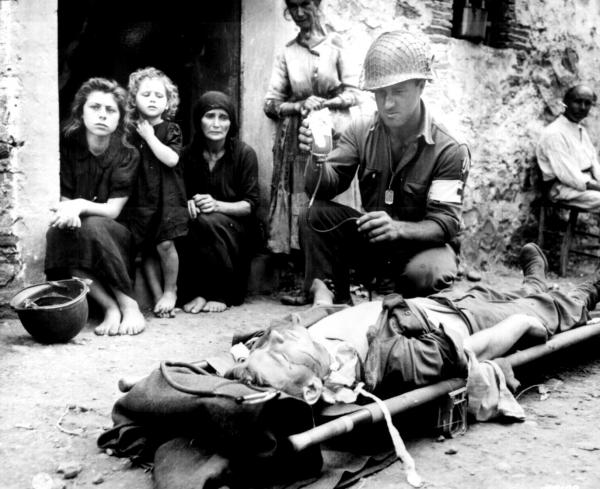
Image

Army private Roy W. Humphrey's receiving blood plasma after he was wounded by shrapnel in Sicily, August 9, 1943.
Credit: The Franklin D. Roosevelt Library.
During World War II, American soldiers had a greater chance of surviving wounds than ever before. Before the introduction of penicillin, soldiers were more likely to die of bacterial infections than from their wounds. By reducing death from the shock caused by bleeding, dried blood plasma also became a vital element in the treatment of the wounded on World War II battlefields.



